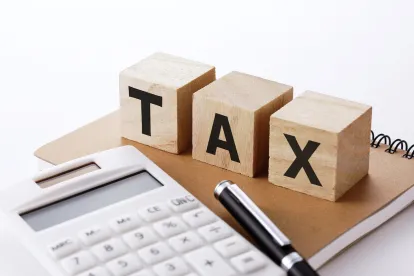On March 18, 2020, the U.S. Senate passed the second in a series of bills in response to the COVID-19 outbreak within the United States. President Donald Trump signed the bill (H.R. 6201) into law later that evening.
Summary of the Families First Coronavirus Response Act
The Families First Coronavirus Response Act aims to support businesses with fewer than 500 employees and their workers affected by the virus outbreak. The act advances this goal by providing certain employees with emergency paid sick leave and/or partially paid public health emergency leave. Payments under these leave programs are not considered wages on which the employer must pay Social Security and Medicare taxes. Additionally, to help pay for these paid leaves, affected employers are allowed refundable credits toward their share of quarterly Social Security and Medicare taxes.
Payroll Tax Credits for Emergency Paid Leaves
Employers with fewer than 500 employees are eligible for tax credits on amounts paid to employees who go out on emergency paid sick leave or public health emergency leave during a fiscal quarter. The credits apply against their share of quarterly Social Security and Medicare taxes. These credits are equal to the amount paid by the employer under these leave programs during the quarter, subject to certain limits detailed below.
Public health emergency leave payments considered for the credit for each employee will not exceed $200 per day of public health emergency leave, and will not exceed $10,000 per employee for all quarters.
Emergency paid sick leave payments considered for purposes of the credit are limited to 10 total days of payments to each employee (including days for which credits are claimed in prior quarters). Other limits to the emergency paid sick leave credit depend on the specific reasons for the employee’s absence, categorized into two tiers. Tier 1 absences include leave taken for the following reasons:
- the employee is caring for an individual who is either subject to a federal, state, or local quarantine or isolation order, or has been advised to self-quarantine by a healthcare provider;
- the employee is caring for his or her child because of a school closure or childcare unavailability due to COVID-19; or
- substantially similar circumstances, to be specified by the Secretary of Health and Human Services.
“Tier 2” absences include leave taken for the following reasons:
- the employee is quarantined or isolated by order of the federal, state, or local government;
- the employee has been advised to self-quarantine by a healthcare provider; or
- the employee is experiencing symptoms of COVID-19 and is seeking a medical diagnosis.
Credits for emergency paid sick leave payments due to Tier 1 absences are limited to $200 per employee per day and $2,000 in the aggregate of emergency paid sick leave. For Tier 2 absences, this amount changes to $511 per day and $5,110 in the aggregate per employee.
The employer may receive a refund if the credits exceed the employer’s Social Security and Medicare tax obligations for the quarter (considered after any credits for employing veterans and for small business research expenditures). The amount of the credits may be increased by the employer’s qualified health plan expenses allocable to emergency paid sick leave payments under regulations to be issued by the Department of the Treasury.
Additional limitations apply to prevent employers from receiving unintended or excess tax benefits relating to these paid leave payments. The employer’s gross income for the year is increased by the amount of credits taken during the year for emergency paid sick leave and public health emergency leave payments, effectively negating the corresponding deduction for wages paid to employees. These leave payments may not be considered when calculating the credit for paid family and medical leave. The credits do not apply to federal, state, or local government employers. Employers may elect not to receive the credits.
Conclusion and Remaining Questions
These rules are effective until December 31, 2020, and take effect within 15 days after the date President Trump signed the bill into law, with the exact date selected by the Secretary of the Treasury. Congress will make up the deficit to Social Security and Medicare purses due to these credits from the general fund so that benefits for Social Security and Medicare will not be impacted.
Questions remain as to the implementation of these credits, such as whether the credits will be obtained via tax deposit reductions, the Form 941 process, or some other mechanism. Each of these possibilities present different cash-flow implications for employers. We note that one provision of the Act appears to anticipate the Department of the Treasury promulgating regulations that waive penalties for failure to deposit amounts in anticipation of the credits provided within the Act. While the exact mechanism behind the credit is currently uncertain, it appears that employers may reduce tax deposits on a payroll-by-payroll basis in anticipation of a credit. If this is the case, this will enhance cash flow for employers compared to a quarterly refund of taxes already deposited. Given the urgency associated with the Act and the relief it will bring to employers, we anticipate that these uncertainties will be addressed shortly in proposed regulations.






 />i
/>i

